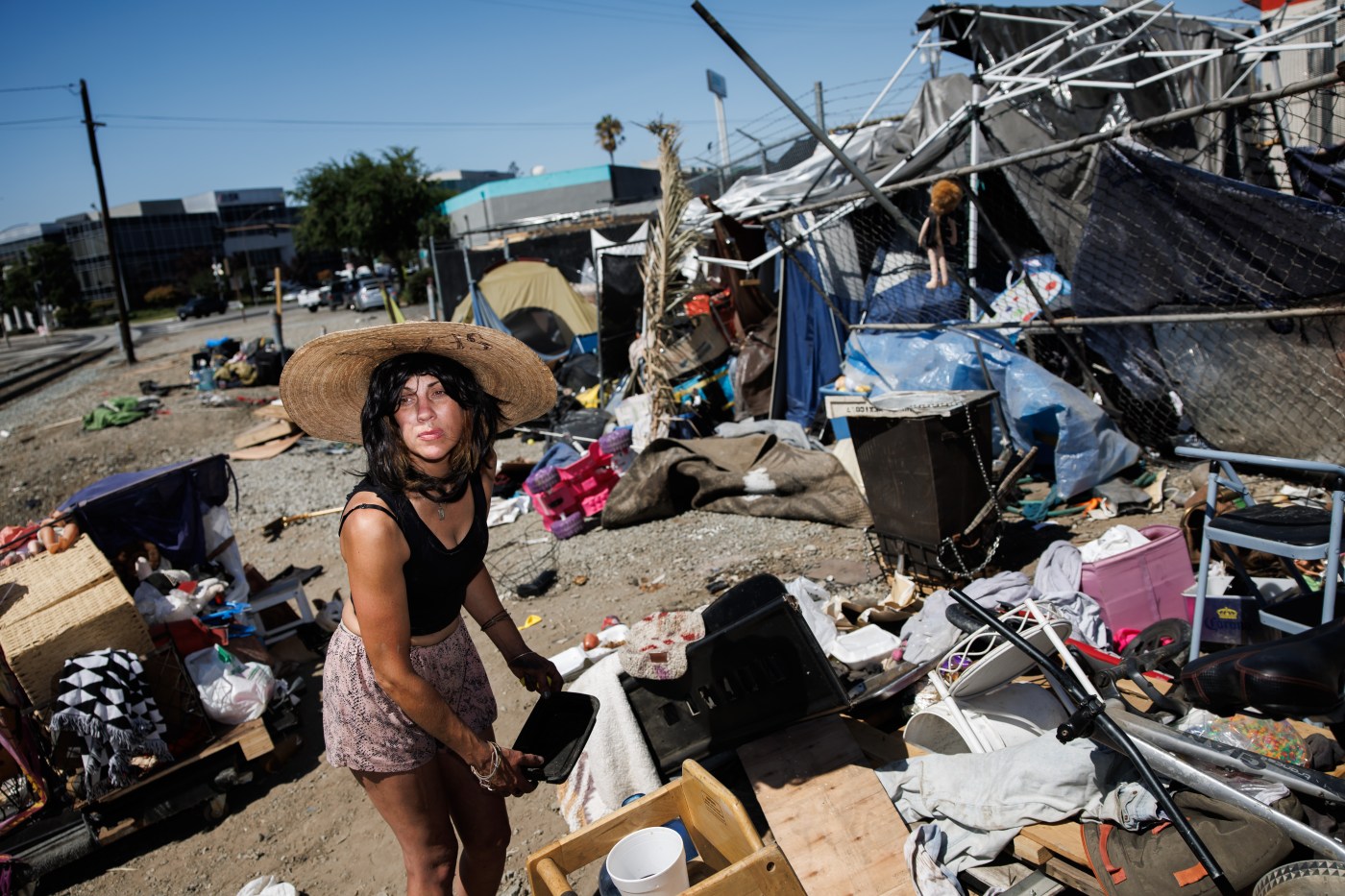San Mateo County, arguably more than any region in the Bay Area, has embraced new — and controversial — approaches to solving homelessness.
Earlier this year, the county adopted an ordinance that allows officials to cite and arrest homeless people who repeatedly refuse a shelter bed. It also became one of the first counties to launch a state-mandated mental health court aimed at compelling more unhoused residents into treatment.
But six months after the shelter ordinance took effect, officials have yet to enforce it, in large part because the law only applies to a narrow subsection of the local homeless population. And in the two months since the county began phasing in its mental health “CARE Court,” officials have determined just three people have met the program’s qualifications and should go before a judge.
Those early outcomes raise questions about how effective the efforts can be in helping to bring the county’s estimated 2,130 homeless people off the street and into housing, as frustration mounts over unsafe tent encampments and jarring scenes of human suffering in public view. Still, officials are confident the new approaches, though sharply criticized by some homeless advocates, will have an impact and can even be models for other local governments.
A train passes by a homeless encampment in Redwood City, Calif., on Wednesday, Aug. 28, 2024. (Dai Sugano/Bay Area News Group)
“There’s got to be as many avenues as possible, and as many tools as possible, to help those in need,” said County Executive Mike Callagy.
The county’s shelter ordinance, which took effect in late February, applies only to the roughly 114 unsheltered people living in unincorporated areas. Callagy said officials have found that nearly all homeless people in the unincorporated county live in motorhomes and RVs along the coast. He said the ordinance does not cover people in vehicles, so there’s been little opportunity to enforce it.
The county is considering other options to respond to vehicle-dwellers who turn down shelter. But Callagy added that most have been eager to accept services.
The shelter ordinance predates Gov. Gavin Newom’s executive order last month directing state agencies to shut down encampments and a subsequent threat to cut funding to local governments that fail to get more people off the street. It also predates a landmark U.S. Supreme Court ruling in June that allows cities and counties to clear encampments without first offering shelter.
Callagy said the county hopes its ordinance can be a template for cities on the Peninsula to adopt similar measures to rein in encampments. East Palo Alto Mayor Antonio Lopez, who’s running for a county supervisor seat this November, has publicly called on his city and others countywide to do just that.
Dani Bocek, who was staying at a Redwood City encampment bordering the railroad tracks near Highway 101, isn’t subject to the ordinance. But she said the dozen or more people at the camp had heard of the new law. She said some had been quick to leave the area whenever authorities arrived out of the misplaced fear they could receive a written warning for refusing shelter. After two warnings, homeless people can be charged with a misdemeanor.
Last week, the state transportation department notified Bocek and fellow campers that authorities planned to clear the encampment. Bocek said she didn’t plan on accepting a shelter bed if officials offered it. She described a “jail mentality” at some local shelters, pointing to curfews and strict visitation rules — and the same coarse bed sheets she remembers from brief stints being incarcerated.
Related Articles
San Jose begins clearing part of troubled Columbus Park homeless camp
While building ‘Camp Hope’ in Martinez, she lost $125,000 to a burglar who had sought her help. Now this former vice mayor is ready to do good deeds again
Does sleeping on the street make this disabled Bay Area Marine Corps veteran a criminal?
Recent Oakland homicide victim was among those who sued to stop state from clearing them out of homeless encampment
Number of homeless students in Santa Clara County schools has nearly doubled since 2020
Homeless people sometimes turn down shelter for a range of personal reasons, from health and safety concerns to a reluctance to follow rules about staying with pets. And they can often only stay for a few weeks or months.
Bocek, 41, who grew up in the Bay Area and became homeless last October after being evicted, said that, in some ways, she’s grown to prefer life in encampments.
“Of all the people in the world, I feel like I have more in common with the people out here than someone sitting at an office desk,” she said.
To bring more people off the street, the county started its CARE Court program in July, five months before a state-imposed Dec. 1 deadline for all counties to have their mental health courts ready. In the Bay Area, only San Francisco also has an operating CARE Court.
Yet, as of late last month, the county had submitted just three petitions for people to enter the program. Callagy said part of the reason for the low number is that only those with severe, untreated psychotic disorders are eligible. While people with serious mental health challenges are among the most visible on the street, they make up only a small percentage of the homeless population.
CARE Court allows family members, close friends, first responders, behavioral health providers, and others to refer people to enter the program, either by contacting county officials or filing a petition directly with the court. A judge can then order participants to enroll in tailored treatment plans, which may include placement in mental health facilities or permanent supportive housing.
As with the shelter ordinance, disability rights advocates have argued that CARE Court is a punitive solution that strips people of their civil rights. But despite those concerns, only 450 people across the eight counties with CARE Courts were enrolled during the program’s first six months. State officials have estimated that 7,000 to 12,000 people could be eligible.
Callagy encouraged community members to refer those in need to San Mateo County’s program.
“We need a continued effort to educate the public and educate law enforcement to call those cases to our attention,” he said.












